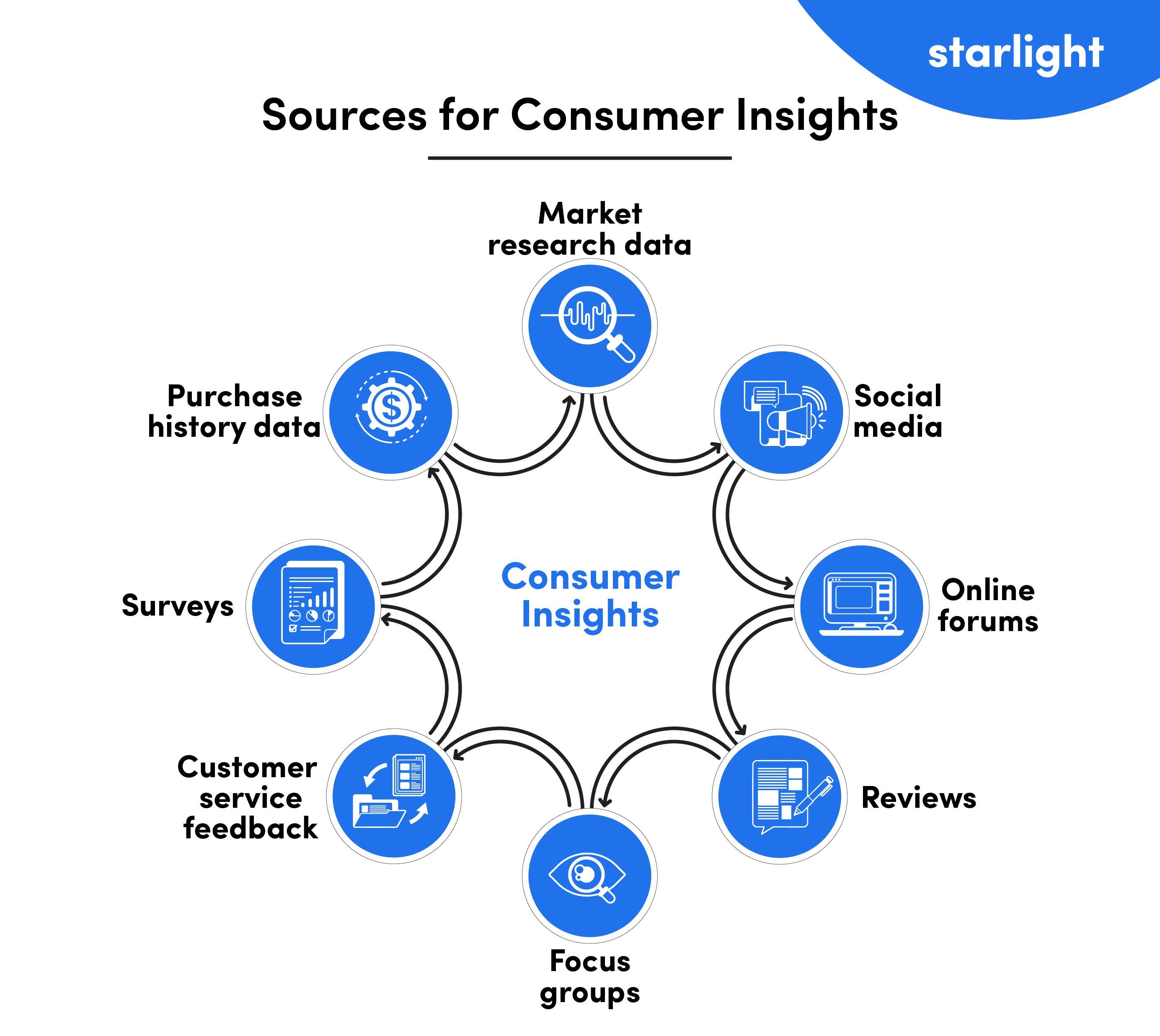In today’s digital landscape, search engines are more than just gateways to details; they’re powerful tools that businesses leverage to gain a competitive edge. Imagine being able to tap into the collective curiosity of millions of users, discovering what they want, need, adn struggle with—all at the click of a button.This isn’t just a fantasy; it’s the reality for savvy businesses that understand the potential of search engines for both research and marketing. From uncovering customer trends to optimizing their online presence, businesses are using these platforms to not only stay relevant but to thrive in an ever-changing marketplace. So, whether you’re a startup seeking your footing or an established brand looking to innovate, join us as we explore the dynamic ways businesses harness the power of search engines to fuel their growth and connect with their customers like never before.
Understanding the Role of Search Engines in Modern Business Strategy
In today’s digital landscape,search engines have become indispensable tools for businesses aiming to optimize their strategies and enhance visibility. With an array of resources available at our fingertips, companies are leveraging these platforms not just for marketing, but also for in-depth research to inform their decision-making processes.
Research is one of the core functions that businesses utilize search engines for. By analyzing trends, consumer behavior, and industry insights, organizations can glean valuable information that shapes their product development and marketing efforts. Hear are some key ways in which search engines facilitate this:
- Market Analysis: Businesses can observe search trends to identify what products or services are gaining traction.
- Competitor Insights: Understanding how competitors rank for certain keywords helps in adjusting strategies to improve visibility.
- Customer Preferences: Evaluating search queries provides insights into what customers are looking for,allowing for tailored offerings.
When it comes to marketing, search engines are a goldmine for businesses looking to attract new customers. The most effective strategies capitalize on search engine optimization (SEO) and pay-per-click (PPC) advertising. Here’s how:
- SEO Optimization: By optimizing website content for relevant keywords, companies can improve their organic search rankings, leading to increased visibility and traffic.
- PPC Campaigns: Paid search ads allow businesses to position their offerings directly in front of potential customers actively searching for similar products.
- Content Marketing: crafting valuable content that answers user queries not only drives traffic but also builds brand authority and trust.
For businesses, understanding data from search engines is crucial. This data can be structured into meaningful insights. Consider the following table that summarizes key metrics and their implications:
| Metric | Implication for Business |
|---|---|
| Search volume | Indicates potential customer interest; higher volume suggests increased demand. |
| Click-Through Rate (CTR) | A high CTR can signify effective ad copy and relevance to users’ search queries. |
| Conversion Rate | Reflects the effectiveness of landing pages in persuading visitors to take action. |
Moreover, with the integration of artificial intelligence and machine learning, search engines are becoming even more sophisticated. They are now able to not only deliver search results but also predict user intent, making it essential for businesses to stay up-to-date with algorithm changes and user engagement strategies. by aligning their business tactics with these developments, companies can ensure they remain competitive in their respective markets.
search engines are not just a tool for finding information; they are a cornerstone of modern business strategy. By leveraging the research capabilities and marketing opportunities they provide, businesses can enhance their decision-making processes, optimize their marketing efforts, and ultimately drive growth.

Unlocking Consumer Insights: How Search Engines Reveal User Intent
In today’s digital landscape, search engines are more than just tools for finding information; they act as powerful lenses through which businesses can decipher user intent. By analyzing search queries, companies can gain invaluable insights into what potential customers are thinking and looking for at any given moment.
Utilizing search engines for research allows businesses to:
- Identify Trends: By examining trending keywords and phrases, companies can spot emerging patterns in consumer behavior, enabling them to stay ahead of the competition.
- Understand pain Points: Analyzing search queries often reveals common challenges or concerns users face, giving businesses the chance to address these issues directly in their marketing strategies.
- Enhance Customer Personas: With detailed insights into what consumers are searching for,businesses can refine their customer personas,leading to more targeted and effective marketing campaigns.
Search engines also provide a treasure trove of data that can shape a company’s content strategy. By using tools such as Google Trends and keyword planners, businesses can determine which topics resonate most with their audience. this data enables them to:
- Create Relevant Content: By aligning content with user intent, companies can boost engagement and drive conversions.
- Optimize SEO Strategies: Understanding popular search terms empowers businesses to optimize their websites for search engines,increasing visibility to potential customers.
- Guide Product Development: Insight into what users are searching for can inform product features and enhancements, ensuring offerings meet market demand.
For those looking to effectively utilize this information, creating a structured approach is essential. Consider the following table that outlines a simple strategy for leveraging search data:
| Step | Action | Benefit |
|---|---|---|
| 1 | Conduct Keyword Research | Uncover user interests and trends |
| 2 | Analyze Competitor Strategies | Identify gaps and opportunities |
| 3 | Create Targeted Content | Engage users with relevant information |
| 4 | Measure and Adjust | Optimize strategies based on performance |
By adopting a data-driven approach to understanding user intent, businesses can unlock the full potential of search engines. Rather than merely reacting to consumer behavior, they can proactively influence it, creating a win-win scenario where both the business and its customers benefit. Ultimately, the ability to read and interpret search data paves the way for more strategic and impactful marketing initiatives.
The Power of Keywords: Crafting Your Business Strategy Around Search terms
In the digital age, keywords are the backbone of effective online strategies. They act as the bridge between your business and potential customers, guiding users to your content while simultaneously shaping how you present your brand. Understanding the value of search terms can considerably enhance your marketing efforts and position your business as a leader in your niche.
To harness the power of keywords, businesses should start with thorough research. This involves:
- Identifying relevant terms: Use tools like Google Keyword Planner or SEMrush to discover what phrases your target audience is searching for.
- Analyzing search intent: Determine whether users are looking for information, products, or services. Tailoring your content to meet this intent can lead to increased conversions.
- Monitoring trends: Stay updated with seasonal or trending keywords that can give you an edge during peak times.
onc you’ve gathered a list of keywords, it’s time to strategically incorporate them into your business strategy. This can include:
- Content creation: Develop blog posts,articles,and videos that naturally integrate your keywords,drawing in organic traffic while providing value to your audience.
- Website optimization: Ensure your site’s metadata, headers, and overall content structure reflect your primary keywords, enhancing your site’s visibility on search engines.
- Social media strategies: Use keywords in your posts and hashtags to increase discoverability across platforms.
Moreover, don’t underestimate the role of local SEO in your keyword strategy.If your business serves a specific geographic area, incorporating local terms into your keywords can attract customers right in your vicinity. Consider creating content that highlights:
- Local events
- community engagement initiatives
- Customer testimonials from local clients
| Keyword Strategy | Benefit |
|---|---|
| Long-tail keywords | Niche targeting for specific audience needs |
| Seasonal keywords | Increased traffic during peak times |
| Local keywords | Higher visibility in local searches |
continuously evaluate and refine your keyword strategy. Use analytics tools to measure performance, adjust based on what works best, and remain adaptable to changes in search patterns.When you treat keywords not just as search terms, but as a fundamental part of your business strategy, you position your brand to connect effectively with your audience, driving growth and success in a competitive landscape.

Competitive Analysis Made Easy: Leveraging Search Data for Market Insights
In today’s rapidly changing marketplace, understanding your competitors can mean the difference between thriving and merely surviving. Search data provides valuable insights that can help businesses gain a competitive edge. By tapping into the vast pool of data generated by search engines, companies can uncover trends, identify customer needs, and adapt their strategies accordingly.
One effective way to leverage search data is through keyword analysis. By identifying which terms and phrases customers are using to find products or services similar to yours, you can adjust your marketing campaigns to focus on high-traffic keywords.This not only helps in improving your SEO but also ensures that your content resonates with what your target audience is actively searching for.
Additionally, analyzing search volume trends can reveal shifts in consumer behavior and preferences. For example,if you notice a spike in searches related to eco-friendly products,this could indicate a growing market segment. By addressing these emerging needs, your business can position itself as a leader in sustainability before your competitors catch on.
Moreover, utilizing search data to monitor competitors’ performance can provide crucial insights. Consider setting up alerts for competitors’ brand names and product launches. This way, you can quickly identify when they are gaining traction and adjust your strategies swiftly. As an example, if a competitor’s new campaign drives significant traffic, analyzing the keywords and strategies they employ can help you refine your own approach.
To visualize how different companies are positioning themselves in the market, you can create a simple comparison table:
| Company | Top Keywords | Search Volume | market Position |
|---|---|---|---|
| Company A | Eco-friendly, Sustainable | 10,000 | Leader |
| Company B | Affordable, Organic | 7,500 | Challenger |
| Company C | Luxury, High-end | 5,000 | Niche |
Lastly, don’t underestimate the power of social listening in conjunction with search data. By monitoring social media platforms, you can gather qualitative insights about customer sentiment and preferences that complement your quantitative search data analysis. This holistic approach will not only enhance your market understanding but also enable you to craft compelling marketing messages that truly resonate with your audience.

Staying Ahead of trends: Using Search Engines to Identify Emerging Opportunities
In today’s fast-paced business landscape, the ability to stay ahead of emerging trends is crucial for success. One of the most effective tools at a company’s disposal is the search engine.By leveraging search engines, businesses can tap into valuable insights that reveal what consumers are curious about, what products are gaining traction, and what topics are currently trending. Here’s how you can utilize search engines to identify opportunities that could give your business a competitive advantage.
Frist, consider using Google Trends to uncover the latest buzz in your industry. This tool allows you to explore the popularity of specific search queries over time. By analyzing these trends,you can:
- identify seasonal trends that can inform your marketing strategies.
- Spot rising topics that can help you tailor your content to audience interests.
- Focus your product development on what consumers are actively searching for.
Another powerful method is to conduct keyword research through tools like SEMrush or Ahrefs.These tools provide insights into what potential customers are searching for and how competitive those keywords are. By focusing on less competitive but highly relevant keywords, businesses can create targeted content that answers specific customer queries. Here’s a quick overview of what these tools can help you discover:
| Feature | Benefit |
|---|---|
| Keyword Difficulty | Understand how hard it is to rank for a keyword. |
| Search Volume | Discover how many people are searching for a specific term. |
| Related Keywords | Find additional keywords that could enhance your content strategy. |
Additionally, exploring social media trends can provide valuable insights into what consumers care about right now. Platforms like Twitter and Instagram often reflect emerging trends that can influence purchasing decisions. By monitoring hashtags and popular discussions, businesses can adjust their marketing strategies to align with consumer sentiment. This can lead to:
- Creation of timely and relevant content that engages your audience.
- Opportunities for collaboration with influencers who are at the forefront of these trends.
- Enhanced brand visibility by participating in trending conversations.
keeping an eye on competitors can also reveal emerging opportunities.By examining their online presence—what keywords they target, what type of content they share, and how they engage with their audience—you can glean insights that inform your own strategy. Consider using tools like BuzzSumo to track competitor content performance and understand what resonates within your industry.
search engines are not just a source for driving traffic; they are a treasure trove of information that can guide your business decisions.By effectively harnessing these tools, you can stay ahead of the curve, identify new opportunities, and ensure your business remains relevant in an ever-evolving market.
Content Creation that Converts: Aligning Your Marketing with Search Engine Findings
In today’s digital landscape, understanding the intricacies of search engines is crucial for effective content creation. Businesses that align their marketing strategies with search engine findings can develop content that not only attracts traffic but also converts visitors into loyal customers. This requires a strategic approach, tapping into the wealth of data that search engines provide.
To maximize the impact of your content, consider the following strategies:
- Keyword Research: Identify the keywords and phrases your target audience is searching for. Tools like google Keyword Planner can help you uncover popular search terms that are relevant to your products or services.
- User Intent: Understanding why users are searching for particular terms enables you to create content that directly addresses their needs. Are they looking for information, solutions, or products? Tailoring your content accordingly can significantly enhance engagement.
- Content Optimization: Once you know your keywords, integrate them strategically into your content. This includes headings, subheadings, and meta descriptions. But remember, quality should never be sacrificed for keyword stuffing—focus on delivering value.
Another effective approach is to analyze the performance of your existing content. use tools like Google Analytics to track engagement metrics, such as bounce rates and time spent on page. This data can provide insights into what resonates with your audience. consider creating a table to summarize the performance of different content types:
| Content Type | Average Time on Page | Bounce Rate |
|---|---|---|
| Blog Posts | 3 minutes | 50% |
| Product Pages | 4 minutes | 30% |
| Video Content | 5 minutes | 25% |
Additionally, harness the power of social media to amplify your reach. Sharing content that ranks well on search engines across social platforms can drive traffic back to your site, further solidifying your online presence.Engage with your audience, ask questions, and encourage discussions to create a community around your brand.
continuously refine your content strategy based on feedback and performance data. The digital landscape is ever-evolving, and staying ahead requires adaptability. Regularly updating your content with fresh insights and trending topics will help maintain relevance and keep your audience coming back for more.
Local SEO: How Businesses Can Dominate Their Local Market Through Search
In today’s digital landscape, local businesses have a unique advantage when it comes to search engine optimization (SEO). By harnessing the power of local SEO, they can dramatically enhance their visibility to potential customers who are searching for services or products nearby. Here’s how businesses can effectively dominate their local market through strategic search engine practices.
To start, it’s essential to optimize your Google My Business (GMB) listing. This is often the first thing potential customers see when they search for local services. Ensure that your GMB profile is complete with:
- Accurate business name
- Address and phone number
- Business hours
- Categories and services offered
- High-quality photos
Each of these elements plays a crucial role in local search rankings. Consistency across all online platforms is vital, so make sure your information remains uniform on your website, social media, and directories.
another key factor in local SEO is customer reviews. Positive feedback not only boosts your credibility but also influences your ranking in search results.Encourage satisfied customers to leave reviews,and don’t forget to respond to them—both positive and negative. Engaging with customers shows that you value their opinions and can enhance customer loyalty.
Furthermore,incorporating local keywords into your website content can significantly improve your search presence. Focus on terms that potential customers might use, such as:
- “Best coffee shop in [City]”
- “Affordable plumbing services near me”
- “Top-rated nail salon in [Neighborhood]”
Creating valuable content—like blog posts about local events or guides—can naturally incorporate these keywords and attract more local traffic.
it’s also beneficial to build local backlinks. Collaborate with local businesses or community organizations, sponsor local events, or engage in guest blogging on local websites. This not only drives traffic to your site but also enhances your authority in the eyes of search engines. Here’s a simple table to illustrate effective local backlink strategies:
| Strategy | Description |
|---|---|
| Sponsorships | Support local events and get featured on their websites. |
| Partnerships | Team up with other local businesses for cross-promotions. |
| Local Directories | List your business on local directories and review sites. |
By leveraging these local SEO strategies, businesses can not only enhance their online presence but also establish themselves as community leaders. Remember, the more visible you are in local searches, the more foot traffic and engagement you’ll attract to your business. With a focused approach to local SEO, the potential to dominate your market is within reach.

Measuring Success: Tools and Metrics to Track Your Search Engine Performance
When it comes to understanding how effective your search engine strategies are, leveraging the right tools and metrics is essential. Businesses today have an array of options at their disposal that can shed light on their online performance. Focusing on the right indicators not only helps in refining your approach but also in demonstrating the tangible impact of your efforts.
One of the most fundamental metrics to track is organic traffic. This number indicates how many visitors are coming to your site through unpaid search results. Utilizing tools like Google Analytics allows you to segment this data by various dimensions such as location, device, and time of visit, helping you pinpoint your audience’s behavior and preferences.
another critical performance indicator is your site’s conversion rate. This metric reflects the percentage of visitors who complete a desired action,whether that’s making a purchase,signing up for a newsletter,or filling out a contact form. By analyzing conversion rates, businesses can assess which search terms are driving valuable traffic and optimize their content accordingly.
Utilizing keyword tracking tools can reveal valuable insights into your search engine ranking. Tools like SEMrush or Ahrefs allow you to monitor your rankings for specific keywords over time. This not only helps in evaluating your current SEO efforts but also in identifying opportunities for new keywords that may be worth pursuing.
Furthermore,keeping an eye on bounce rates is crucial. A high bounce rate may indicate that your landing pages are not engaging enough or that they are not aligned with what users expected when they clicked on your link. By regularly reviewing this metric, you can make necessary adjustments to your content and design to improve user experience.
| Metric | Tool | Purpose |
|---|---|---|
| organic Traffic | Google Analytics | Measure visitors from non-paid search |
| Conversion Rate | google Analytics | Assess effectiveness of landing pages |
| Keyword Rankings | SEMrush | Monitor and optimize for target keywords |
| Bounce Rate | Google Analytics | Identify engagement levels on landing pages |
Lastly, don’t overlook the value of social signals. Monitoring social media shares and likes can provide insight into how your content resonates with your audience. While these metrics don’t directly impact search engine rankings,increased social engagement can lead to greater visibility and traffic,creating a powerful cycle that benefits your search engine performance.

Building Brand Authority: The Importance of Search Engine Visibility
In today’s digital landscape, establishing brand authority hinges significantly on search engine visibility. When potential customers turn to search engines, they are frequently enough on a quest for information, solutions, or products that meet their needs.By optimizing your presence in search results, you not only enhance your chances of appearing in front of these users but also cultivate trust and credibility for your brand.
Consider the following strategies to strengthen your brand’s visibility:
- Quality Content Creation: Producing valuable and informative content helps position your business as a thought leader in your industry.
- SEO Best Practices: utilizing on-page and off-page SEO techniques ensures that your website is easily discoverable by search engines and users alike.
- Social Proof: Encouraging customer reviews and testimonials can significantly boost your brand’s authority and search engine rankings.
- Consistent branding: A cohesive brand message across all platforms reinforces your identity and aids in recognition.
Search engines are often the first touchpoint between your brand and potential customers.When your website ranks high in search results, it sends a powerful message: your brand is relevant, trustworthy, and authoritative. This perception can influence consumer behavior, making them more likely to choose your offerings over competitors.Consequently, establishing a robust online presence can lead not only to increased traffic but also to higher conversion rates.
Engagement metrics such as click-through rates and time spent on your site can further reinforce your brand authority. When users find valuable information quickly,they are more likely to share it,which not only enhances your visibility but also creates backlinks that improve your SEO rankings. The table below illustrates how different types of content can impact user engagement:
| Content Type | Engagement Level | SEO Benefits |
|---|---|---|
| Blog posts | High | Increases organic traffic |
| Infographics | very High | Boosts backlink creation |
| Videos | Medium | Improves time on site |
| Guides & E-books | High | Establishes authority |
The journey to building brand authority through search engine visibility is ongoing. it requires constant attention to evolving algorithms, user behavior, and industry trends. Though, the fruits of your labor can be considerable: not only do you gain the trust of your audience, but you also secure a strong foothold in a competitive marketplace. In essence, mastering search visibility is about more than just driving traffic; it’s about constructing a brand that resonates with and earns the loyalty of customers.

Enhancing Customer Engagement: Utilizing Search Engines for Targeted Marketing
In today’s digital landscape, leveraging search engines goes beyond mere visibility; it’s about creating meaningful connections with your audience. By harnessing the power of search engines, businesses can fine-tune their marketing strategies to reach potential customers when they are actively seeking information. This not only enhances customer engagement but also fosters brand loyalty.
One of the most effective ways to utilize search engines is through keyword optimization. By understanding what terms your target audience is using, you can tailor your content to address their specific needs. Here’s how to get started:
- Research Keywords: Use tools like Google Keyword Planner to discover trending search terms relevant to your business.
- Create content: Develop blog posts, articles, and FAQs that incorporate these keywords naturally.
- Engage with FAQs: Address common questions your audience has, positioning your brand as a trusted source of information.
In addition to keywords, search engines also allow businesses to analyze user behavior through search analytics. By understanding what users are looking for and how they interact with your site, you can modify your marketing strategies accordingly. Consider these approaches:
- Monitor Click-Through Rates: Use analytics to determine which content is attracting clicks and which isn’t.
- Implement A/B Testing: Experiment with different headlines and calls to action to see what resonates most with your audience.
- Adapt Based on Trends: Stay current with search trends and adjust your marketing efforts to align with emerging interests.
| Engagement Metric | Importance | Actionable Strategy |
|---|---|---|
| Click-Through Rate | Indicates content effectiveness | Refine meta descriptions |
| Bounce Rate | Shows content relevance | Enhance user experience |
| Time on Page | Reflects content engagement | Create longer, richer content |
Moreover, using local SEO practices can significantly enhance customer engagement for businesses operating within specific geographic areas. This involves optimizing your online presence to attract local customers actively searching for products or services. Here are some ways to capitalize on local SEO:
- Google My Business: Claim and optimize your listing to appear in local search results.
- Local Keywords: Incorporate location-specific keywords into your content.
- Citations and reviews: Encourage satisfied customers to leave positive reviews and ensure your business information is consistent across various platforms.
Wrapping your marketing efforts in search engine strategies not only enhances customer engagement but also leads to higher conversion rates. By providing valuable content, addressing customer needs, and optimizing for local searches, businesses can build a loyal customer base eager to return time and again.

Adapting to Algorithm Changes: Staying Agile in Your Search engine Strategy
In the fast-paced world of digital marketing, adapting to algorithm changes is not just a necessity; it’s a survival skill. Search engines continually update their algorithms to enhance user experience,which means businesses must stay agile to maintain their visibility. Being proactive about these changes can make all the difference in reaching your target audience effectively.
Understanding the nuances of algorithm adjustments is essential. Here are some key strategies businesses can employ:
- Continuous Learning: Stay updated with industry news, attend webinars, and participate in forums to understand upcoming trends and shifts.
- A/B Testing: Regularly test different strategies and content types to see what resonates best with your audience. This helps in identifying what works before a major algorithm change hits.
- Focus on Quality Content: High-quality, relevant content is always favored by search engines. Ensure your content provides real value to your readers.
Analyzing your website’s performance is equally crucial. Utilize tools like Google Analytics to track traffic sources, user engagement, and conversion rates. This data can guide you in making informed adjustments to your strategy. For example, if you notice a decline in organic traffic, it may be time to revisit your SEO tactics.
Another effective tactic is enhancing your website’s user experience (UX).Search engines prioritize sites that provide a seamless experience for users. Here are a few elements to consider:
| UX Element | Description |
|---|---|
| Page Load Speed | Optimize images and scripts to ensure your site loads quickly. |
| Mobile Responsiveness | ensure your site is fully operational and visually appealing on mobile devices. |
| Clear navigation | Create an intuitive menu structure to enhance user navigation. |
Building a robust backlink profile is another way to bolster your SEO strategy. Focus on acquiring links from reputable sites within your niche. This not only improves your site’s authority but also increases the likelihood of attracting organic traffic.
Lastly, embracing a flexible mindset is vital. The digital landscape can change overnight, and businesses that are willing to pivot their strategies will find success. Regularly review your performance, stay abreast of algorithm updates, and be prepared to experiment with new tactics. In this ever-evolving environment, agility isn’t just an advantage; it’s a prerequisite for success.

The Future of search: Preparing your Business for Upcoming Trends and Technologies
In today’s rapidly evolving digital landscape, businesses are harnessing the power of search engines not just for visibility but as a cornerstone of their research and marketing strategies. understanding how to effectively leverage search engines can lead to transformative results for companies of all sizes.
One of the most significant ways businesses use search engines is through keyword research. By identifying and targeting the right keywords, companies can align their content with what potential customers are actively searching for. This not only increases organic traffic but also enhances the relevance of their messaging. here are some key benefits:
- Improved visibility in search results
- Increased website traffic
- enhanced understanding of customer intentions
Furthermore, businesses are utilizing search engines for competitive analysis. By analyzing competitors’ online presence, companies can identify gaps in their own strategies and discover opportunities for differentiation. Tools that offer insights into competitors’ keywords, ad spend, and content strategies can provide invaluable data.Consider creating a simple comparison table to track these insights:
| Competitor | Top Keywords | Monthly Traffic | Content Type |
|---|---|---|---|
| Competitor A | Keyword 1,Keyword 2 | 5,000 | Blogs |
| Competitor B | Keyword 3,Keyword 4 | 3,500 | Videos |
| Competitor C | Keyword 5 | 4,000 | Infographics |
Moreover,businesses are now embracing search engine marketing (SEM),a powerful method that combines SEO and paid advertising. Utilizing pay-per-click (PPC) campaigns allows businesses to appear at the top of search results, driving targeted traffic with immediate results. This approach is especially effective for promotional campaigns, product launches, or seasonal sales. Companies should consider the following tactics:
- Creating compelling ad copy that speaks to audience needs
- Using geo-targeting to reach local customers
- Conducting A/B testing to optimize ad performance
with the rise of voice search and AI technologies, businesses must evolve their search strategies accordingly. Adapting content for voice search involves focusing on natural language processing and long-tail keywords.As voice-activated devices become more prevalent, companies that optimize for this trend will capture a growing audience looking for quick, conversational responses.
Frequently Asked Questions (FAQ)
Q&A: How Businesses Use Search Engines for Research and Marketing
Q: Why are search engines so crucial for businesses today?
A: Great question! Search engines are like the digital backbone of modern business. They help companies understand market trends, customer preferences, and competitors. By harnessing the power of search engines, businesses can gather valuable insights that inform their strategies, improve their products, and tailor their marketing efforts to meet consumer needs.
Q: How do businesses conduct research using search engines?
A: Businesses use search engines to perform a variety of research tasks. They analyze keywords related to their industry to see what potential customers are searching for. They look at trending topics and consumer questions to identify gaps in the market. Additionally, companies can explore competitor websites to see how they are positioning themselves and what strategies they are using.Q: Can you explain how keyword research works?
A: Absolutely! Keyword research involves identifying the phrases and terms that people use when searching for products or services. Businesses use tools like Google Keyword Planner or SEMrush to find relevant keywords, analyze their search volume, and gauge the competition. By understanding what customers are searching for, businesses can create content that resonates with their audience and drives traffic to their sites.
Q: What role does SEO play in a business’s marketing strategy?
A: SEO, or Search Engine Optimization, is critical! It involves optimizing a website so that it ranks higher in search engine results. This means when potential customers search for relevant keywords, your business appears at the top of the list. A solid SEO strategy can significantly increase visibility and drive organic traffic, leading to more leads and sales without the cost of paid advertising.Q: How can businesses leverage search engines for marketing?
A: There are several ways! First, businesses can create valuable content that answers common questions or provides solutions to problems. This not only improves SEO but also builds trust with potential customers.Second, paid search ads (like Google Ads) can target specific keywords and demographics to reach a wider audience. Lastly, businesses can utilize social media platforms that integrate search features to engage with users and drive traffic to their websites.
Q: What about tracking and analytics? Are search engines useful for that?
A: Definitely! Search engines provide tools,like Google Analytics,that allow businesses to track their website’s performance. They can monitor traffic sources, user behavior, and conversion rates, helping them understand what’s working and what isn’t. This data is invaluable for refining marketing strategies and ensuring that businesses are effectively reaching their target audience.
Q: What’s the bottom line? How can businesses get started?
A: The bottom line is that search engines are a treasure trove of information and marketing potential. To get started, businesses should focus on keyword research, invest in SEO, create quality content, and utilize analytics to track their progress. With a strategic approach, companies can not only survive but thrive in today’s competitive landscape. So, why wait? dive into the world of search engines and unlock your business’s full potential!
Future Outlook
it’s clear that search engines are not just tools for finding information; they are powerful allies for businesses looking to research their market and amplify their marketing efforts. By harnessing the vast sea of data available at their fingertips, companies can gain invaluable insights into customer behavior, industry trends, and competitive strategies.
Whether you’re a small startup or an established enterprise, leveraging search engines can give you a significant edge in today’s digital landscape. So, why not start integrating these strategies into your business model today? The potential to connect with your audience, enhance your marketing campaigns, and ultimately drive growth is right there—waiting for you to seize it.
Remember, in the world of business, knowledge is power, and search engines are the gateway to that knowledge.So dive in, explore, and watch as your insights translate into actionable strategies. your next big breakthrough could be just a search away!

